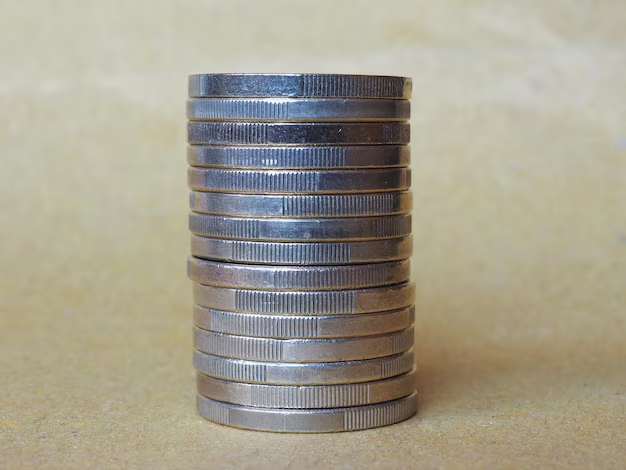Is Investing in Silver a Smart Move for You? 🔍 A Comprehensive Guide
In the dynamic world of investing, many individuals are turning their attention to the often-overlooked, yet historically significant, precious metal: silver. Whether you're an experienced investor or just starting to explore options to diversify your portfolio, investing in silver deserves your attention. But is silver a good investment? Let's dive deep into this shimmering topic, exploring the various angles and providing you with valuable insights to help you make an informed decision.
Why Consider Investing in Silver? 🚀
History and Legacy of Silver
Silver has been treasured across civilizations for centuries, from ancient coins to jewelry and beyond. Its historical value and cultural significance lay a strong foundation for its current use as both a financial asset and an industrial commodity. Understanding its past can provide context for its potential future value.
Modern Applications of Silver
Silver isn't just a shiny object; it's an indispensable component in modern technology. Its excellent conductivity makes it valuable in electronics, solar panels, and medical devices, contributing to its demand. These industrial applications, combined with its historical allure as a precious metal, keep silver relevant in today's market.
The Benefits of Investing in Silver 🌟
Hedging Against Inflation
Inflation erodes purchasing power, and savvy investors often turn to precious metals to hedge against this. Silver, much like gold, holds its value over time, offering a protective shield against fluctuating economic conditions.
Portfolio Diversification
Investing in silver can diversify your portfolio, giving you exposure to a different asset class. Diversification helps to mitigate risk, as the price movements of silver often do not correlate directly with those of traditional investments like stocks and bonds.
Liquidity and Accessibility
Silver is notable for being both liquid and accessible. You can invest in it through various forms, such as coins, bars, or exchange-traded funds (ETFs), making it easy to buy and sell based on market trends.
Potential Risks and Considerations ⚠️
Volatility Factors
While silver offers many benefits, it's crucial to note the volatility associated with it. Its price can swing dramatically due to geopolitical events, economic uncertainties, or changes in industrial demand.
Storage and Security
Unlike digital or paper assets, physical silver requires secure storage. This could mean additional costs for safe storage solutions or the risk of theft if stored improperly.
Market Speculation
The silver market can be influenced by speculative trading, which can lead to sudden price spikes or drops. Such speculation can sometimes overshadow the metal’s intrinsic value and industrial demand.
Forms of Silver Investment: Choose Your Path 🛤️
Physical Silver
Investing in physical silver means purchasing tangible items like coins and bars. This form of investment is perfect for those who prefer realizing their assets in a palpable form. However, it requires careful consideration of storage and insurance.
Silver ETFs and Stocks
For those hesitant about physical storage, silver ETFs and stocks offer indirect ownership through more conventional investment platforms. These options provide the benefits of liquidity and easier management, aligning more closely with traditional investment strategies.
Silver Mining Companies
An alternative exposure to silver is through investing in silver mining companies. This approach carries the potential for higher returns, but it also comes with risks tied to mining operations and market conditions.
Key Factors Influencing Silver Prices 📊
Understanding the factors that affect silver prices can empower you to make strategic decisions. Below are some major influences:
- Industrial Demand: Increasing use in electronics and clean energy solutions raises demand.
- Monetary Policies: Interest rates and currency values can impact silver prices.
- Economic Uncertainty: Global crises often lead to increased silver investment as a safe haven.
- Market Speculation: Trader behavior can cause short-term price fluctuations.
Practical Tips for Silver Investors 🏆
- Research Thoroughly: Stay informed about the factors affecting silver's value.
- Diversify Your Holdings: Combine physical and digital forms to optimize your portfolio.
- Determine Your Risk Tolerance: Know your comfort level with market volatility.
- Monitor Market Trends: Keep an eye on global economic indicators and industrial demand.
Summarized Practical Tips for Aspiring Silver Investors 💡
- Know the Market: Regularly update yourself with market trends and forecasts.
- Diversify: Mix different types of silver investments for balance.
- Watch Out for Volatility: Be prepared for short-term price swings for potential long-term gains.
- Be Patient: Silver investment rewards often come over time, needing patience.
Concluding Insights: Balancing Benefits and Risks 🏁
Investing in silver is an intriguing prospect that hinges on your financial goals, risk appetite, and market understanding. While it offers the dual advantages of historical allure and modern industrial relevance, awareness of its potential risks is crucial for making informed decisions.
Overall, silver can serve as a viable component of a diversified investment portfolio, potentially providing security against economic downturns and offering growth opportunities through industrial demand. Whether you pursue physical silver, ETFs, or mining stocks, knowing your objectives and doing diligent research will stand you in good stead.
Let this comprehensive guide be the starting point on your journey to silver investment, arming you with the knowledge to navigate this shimmering sector with confidence and foresight.
